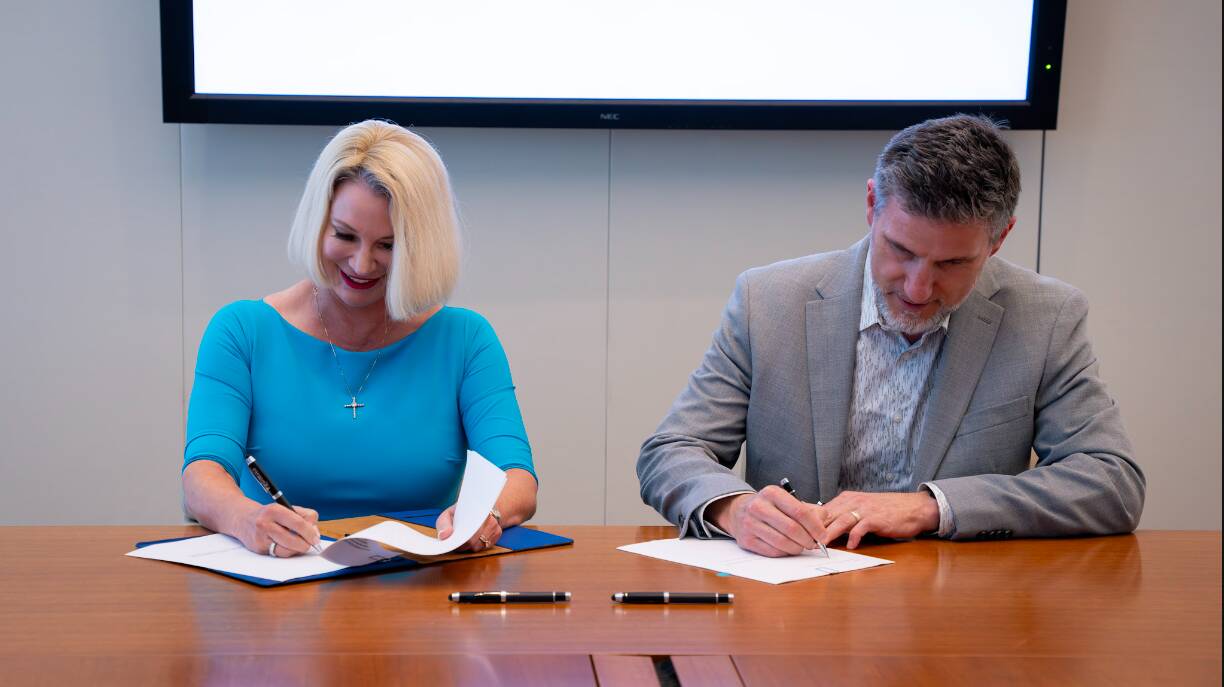selected item
2 min read
• Jan. 30, 2023Low-carbon hydrogen: Fueling our Baytown facilities and our net-zero ambition
2 min read
• Jan. 30, 2023ExxonMobil is planning its first world-scale plant for the production of low-carbon hydrogen at our refining and petrochemical facility at Baytown, Texas. There, we expect to produce up to 1 billion cubic feet per day of hydrogen made from natural gas, and expect over 98% of the associated CO2 to be captured and safely stored underground. As a result, the site would be the largest low-carbon hydrogen project in the world at planned startup in 2027-2028.
This project would be a game changer – in two ways.
First, using hydrogen to fuel our olefins plant at Baytown could reduce CO2 emissions at our integrated Baytown complex by up to 30%1. The project would support ExxonMobil’s ambition to achieve net-zero greenhouse gas emissions (Scopes 1 and 2) across our operated assets by 2050.
Second, the carbon capture and storage project included in this plan would be one of the world’s largest, capable of storing up to 10 million metric tons of CO2 per year – equal to the emissions from more than 2 million cars2. It could double our current carbon capture and storage capacity of 9 million metric tons per year, which leads industry.
This carbon capture and storage facility would mark ExxonMobil’s initial contribution to the Houston carbon capture hub concept we announced last year. Today, this concept has evolved into a cross-industry effort to capture and store up to 100 million metric tons of CO2 per year by 2040 from Houston-area power plants, refineries and petrochemical facilities, including our Baytown site. We plan to capture up to 7 million tons of CO2 a year from our Baytown hydrogen project, utilizing carbon capture technology from Honeywell.
Reducing our Scope 1 and 2 emissions at Baytown could potentially lower the carbon footprint of the products we make there3, including the modern polymers found in everything from medical equipment to cell phones and electric cars. We also plan to make this low-carbon hydrogen available to other Houston-area industrial facilities, to help them reduce their emissions.
So you can see why this project would be a game changer. It would enable us to reduce our greenhouse gas emissions at Baytown, help our customers reduce their emissions and provide additional solutions to area industries. While we expect to make a final investment decision in 2024, we have awarded a contract to Technip for the next stage of front end engineering and design (FEED) of the project at the Baytown integrated facility. The final investment decision will be subject to supportive government policy, necessary regulatory permits and market conditions.
Hydrogen poised for growth
Hydrogen is especially important in reducing greenhouse gas emissions for the hard-to-decarbonize sectors such as heavy industry. The International Energy Agency sees hydrogen and hydrogen-based fuels meeting 10 percent of global energy needs as part of its “Net Zero by 2050” scenario. Along with carbon capture and storage, it will be critical to achieving societal net-zero greenhouse gas emissions goals.
Governments can accelerate investments in these technologies by putting in place supportive policies, such as a price on carbon, which can help reduce costs and build new markets.
No single technology will get the world to net zero while maintaining the living standards today’s energy system supports.
Experts agree we’ll need a range of solutions, including hydrogen and carbon capture and storage. ExxonMobil is committed to leveraging its engineering and technology expertise in both, as well as its ability to deliver large-scale projects, in order to reliably supply lower-carbon products that improve quality of life and meet society’s evolving needs.
FOOTNOTES:
- Compared to 2016 levels.
- Per U.S. EPA GHG calculator, based on 2021 data for gasoline-powered passenger vehicles.
- Calculated using an established lifecycle assessment methodology on a cradle-to-gate basis. The final investment decision will be subject to supportive government policy, necessary regulatory permits and market conditions.
Cautionary Statement
Statements of future events, investments, or partnerships in this release are forward-looking statements. Actual future results, including project plans, partner participation, timing, capacities, and costs could differ materially depending on a number of factors including the ability to execute operational objectives on a timely and successful basis; implementation of government frameworks and permitting for carbon capture and storage, hydrogen, ammonia and other lower-emission technologies; timely completion of construction projects; commercial and consumer interest in lower-emissions opportunities; changes in plans or objectives prior to final funding decisions or project startups; unforeseen technical or operational difficulties; and other factors discussed under the heading Factors Affecting Future Results in the Investors section of our website at www.exxonmobil.com. Any forward-looking statement speaks only as of the date of this press release and the companies named herein disclaim any obligation to update any forward-looking statement.
Explore more

Capture it. Move it. Store it: Three steps for reducing CO2 emissions
2 min read
• Aug. 12, 2025
How we’re capturing carbon and storing it safely
2 min read
• May 5, 2025
Calpine, ExxonMobil sign CO2 transportation and storage agreement for power generation project
2 min read
• April 23, 2025
2024: A breakout year for our carbon capture and storage business
3 min read
• Jan. 9, 2025
Steel, ammonia and AI? Oh my! What can’t our CCS help decarbonize?
4 min read
• Dec. 11, 2024
ExxonMobil secures largest CO2 offshore storage site in the U.S.
3 min read
• Oct. 10, 2024
